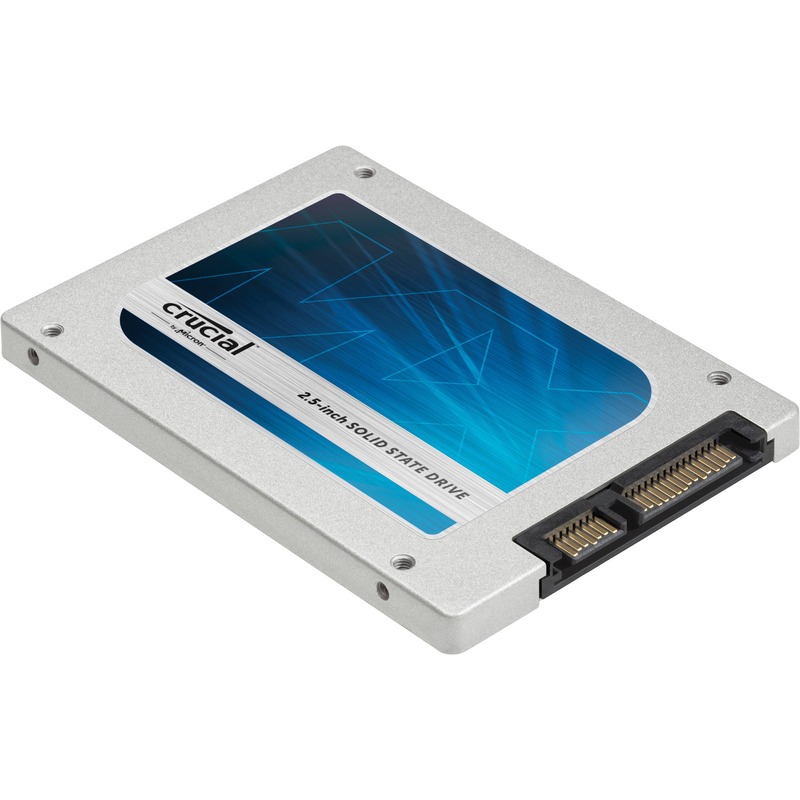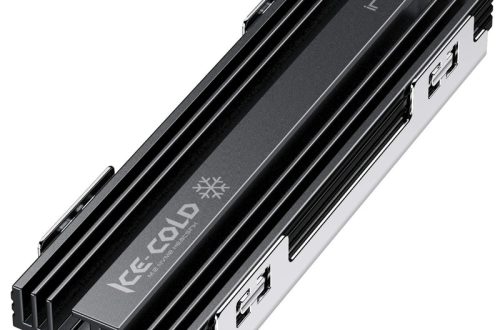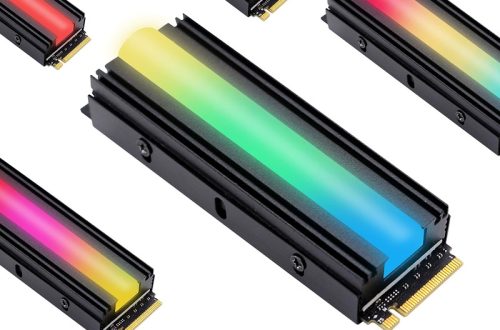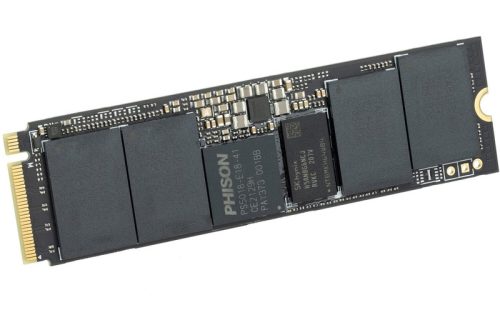Introduction to SATA SSD Technology
Solid State Drives, or SSDs, have transformed the storage market. SATA, standing for Serial ATA, is an interface used by SSDs to communicate with the main system. Unlike the older HDD technology, SATA SSDs have no moving parts. This key difference allows them to access data at a much faster rate. The benefits these drives offer are substantial. They provide quicker boot times, faster file transfers, and overall improved system responsiveness. When considering an upgrade from a traditional hard disk drive (HDD), SATA SSDs are a popular option due to their blend of performance and affordability. They are also widely compatible with the majority of desktop and laptop computers, making them a versatile choice for users looking to enhance their computer’s speed without a complete overhaul. Embracing the SATA SSD technology means taking a significant step towards a more efficient computing experience. With their rise in popularity, SATA SSDs are increasingly becoming the standard for modern PC storage solutions.

Benefits of Upgrading to a SATA SSD
Upgrading to a SATA SSD from an older hard drive can bring a host of improvements to your computer’s performance. The first and most noticeable benefit is speed. A SATA SSD can drastically reduce the time it takes for your system to start up and for programs to load. With an SSD, you won’t need to wait minutes for your computer to boot; you can expect it to be ready to use in mere seconds.
Another advantage is durability. Since SSDs don’t have moving parts, they are less likely to fail or suffer damage from shocks or drops. This makes them ideal for laptops, which are often transported and handled more roughly than desktops. Additionally, SSDs operate silently, doing away with the noise from spinning disks and read-write heads found in traditional HDDs.
Furthermore, an SSD consumes less power, which is a big plus for laptop users who rely on battery life. With lower power consumption, your battery lasts longer, letting you work longer without needing to charge.
Data access times with an SSD are impressively quick, meaning you can retrieve files and execute commands almost instantaneously. This speed can be a game-changer for tasks that involve large file transfers or heavy read and write operations, such as video editing or gaming.
Lastly, upgrading to a SATA SSD is straightforward and adds value to your computer. The cost of SSDs has decreased significantly, making them a cost-effective way to boost system performance. When choosing an upgrade for your PC, considering a SATA SSD is wise for anyone looking for a balance between cost and performance enhancements.
How SATA SSDs Improve PC Performance
Understanding how SATA SSDs enhance PC performance can lead you to make an informed decision when upgrading. Here’s a breakdown of the core ways SATA SSDs boost your computer’s efficiency:
- Faster System Boot-Up: A SATA SSD can accelerate the boot-up process significantly. Your PC starts up in seconds rather than minutes.
- Speedy Data Access: With SATA SSDs, data access times drop drastically. Applications launch quickly, and working with large files feels effortless.
- Enhanced Multitasking: SATA SSDs allow for smoother multitasking. Switching between programs happens instantly, without lag.
- Quiet Operation: Unlike HDDs, SATA SSDs are silent. They lack moving parts, eliminating noise from disk spinning.
- Fewer System Crashes: With increased reliability, systems with SATA SSDs experience fewer crashes and errors.
- Lower Power Usage: SATA SSDs consume less energy. This feature extends battery life for laptop users and reduces energy costs for desktops.
- Improved Game Load Times: Gamers notice a significant drop in load times when using SATA SSDs. Games start and run more smoothly.
- Increased Overall Responsiveness: Whether editing videos or browsing the web, your PC responds faster to each command.
Replacing an old HDD with a SATA SSD upgrades your PC experience materially. Improvements in speed, energy efficiency, and reliability are just a few reasons to consider this change.

Comparing SATA SSDs with Traditional Hard Drives
When considering a storage upgrade, the debate often revolves around SATA SSDs versus traditional hard drives (HDDs). Understanding the differences between these two technologies is crucial. Let’s compare the key aspects:
- Speed: SATA SSDs have much faster data access times compared to HDDs. They are quicker in starting up your PC and launching applications.
- Durability: SSDs are more robust as they lack moving parts. They are less prone to physical damage, making them more reliable over time.
- Noise: HDDs make noise due to their spinning disks; SSDs don’t. This makes SSDs a silent alternative, adding to the comfort of your work environment.
- Power Consumption: SSDs use less power, which is beneficial for both energy bills and the battery life of laptops.
- Heat Generation: HDDs tend to heat up more due to moving parts. SSDs stay cooler, reducing the risk of overheating.
- Size and Weight: SSDs are typically smaller and lighter, which is particularly advantageous for laptops and compact PCs.
- Cost: Initially, SSDs were more expensive, but prices have fallen. They now offer good value for the performance boost they provide.
While SATA SSDs present clear advantages over HDDs, cost used to be a barrier. However, with costs decreasing, SATA SSDs are becoming the preferred option for those seeking enhanced PC performance without the high expenses.
Installation and Setup of SATA SSDs
Installing a SATA SSD is a straightforward process and can make a huge difference in your PC’s performance. Here’s a simple guide to help you through the installation and setup:
- Choose the Right SSD: Ensure the SATA SSD you purchase is compatible with your system. Check the size and form factor to fit your laptop or desktop.
- Backup Your Data: Before starting, backup any important data. This will safeguard your files in case of any mishaps during installation.
- Power Down and Open the Case: Turn off your computer and unplug it from the power source. Open the side panel of your desktop or access the HDD compartment in your laptop.
- Remove the Old Drive (If Necessary): If you’re replacing an HDD, unscrew and gently remove it from its slot. For laptops, you might need to slide out the drive bay housing the old HDD.
- Install the SATA SSD: Secure the new SSD in the empty drive bay. Align it correctly and connect the SATA data and power cables.
- Close the Case: Once the SATA SSD is firmly in place, reassemble your computer case or laptop compartment.
- Power On and Format: Turn on your PC and format the new drive if it’s not pre-formatted. This will prepare it for use.
- Install Operating System: You can now install your operating system onto the SSD, or clone your existing system if you’ve gone with that route.
- Tweak Settings for SSD: Adjust settings such as turning off defragmentation and enabling TRIM for optimal SSD performance.
- Final Checks and Driver Updates: Ensure all drivers are updated, and perform a final check to confirm everything is running smoothly.
With these steps, you can install and set up your SATA SSD without much hassle. Remember to handle the SSD with care, and if you’re ever in doubt, refer to the manual or seek professional help.
Best Practices for Maintaining SATA SSD Performance
To ensure your SATA SSD continues to operate at peak performance, consider these best practices:
- Regularly Update Firmware: Manufacturers often release firmware updates that improve performance and stability. Check the manufacturer’s website for updates and install them promptly.
- Keep Your System Clean: Use disk cleanup tools to remove unnecessary files. This helps maintain the SSD’s speed and responsiveness.
- Minimize Disk Writes: Reduce the amount of data written to the SSD by using it for OS and applications, and storing large files on an HDD if needed.
- Enable TRIM Command: TRIM helps the SSD manage data and can prolong its life. Ensure it is enabled in your operating system.
- Avoid Defragmentation: Unlike HDDs, SSDs do not benefit from defragmentation. It can actually reduce the lifespan of your SSD.
- Monitor SSD Health: Use software tools provided by the SSD manufacturer to monitor health and performance.
- Manage Your Storage Space: Don’t fill the SSD to its full capacity. Leave some free space to allow for efficient data management.
- Control Your Power Settings: Use power settings that don’t power down the SSD as this can reduce its lifespan over time.
Following these tips will help you keep your SATA SSD running smoothly, ensuring faster access times and a more reliable system overall.

Recommended SATA SSD Models for Various Use Cases
Selecting the right SATA SSD for your specific needs can greatly maximize your PC’s speed and efficiency. Here we will recommend some of the top SATA SSD models suited to various use cases.
For Everyday Computing: SanDisk Ultra 3D
The SanDisk Ultra 3D is a reliable choice for daily tasks such as browsing, email, and office applications. It offers a good balance of performance and price.
For Gaming: Samsung 860 EVO
Gamers seeking faster load times should consider the Samsung 860 EVO. It is renowned for its quick read and write speeds, enhancing the gaming experience.
Workstations and Creative Professionals: Crucial MX500
The Crucial MX500 caters to creatives and professionals requiring high reliability and robust performance for tasks like video editing and graphic design.
Budget-conscious Users: Kingston A400
For those on a tight budget, the Kingston A400 presents an affordable option without sacrificing too much on performance, ideal for cost-effective upgrades.
For Laptops: WD Blue 3D NAND
Laptop users will appreciate the WD Blue 3D NAND’s power efficiency and compact form factor, it’s a top pick for boosting laptop performance.
Heavy-duty Users: Seagate BarraCuda SSD
The Seagate BarraCuda SSD offers ample storage and endurance for users with heavy data workloads, such as data analysis or extensive database access.
For Maximum Durability: SK Hynix Gold S31
The SK Hynix Gold S31 provides consistent performance and is built with durability in mind, ideal for rugged environments or mobile devices that are frequently transported.
Each of these models stands out in their respective category, helping users optimize their computing according to their typical use scenarios. By choosing a model based on your primary activities, you can ensure that your PC operates at its best. Ensure that you also consider the storage capacity you need, as well as compatibility with your existing system before making your purchase.
Overcoming the Limitations of SATA SSDs
Despite the numerous benefits that SATA SSDs bring to the table, it’s important to acknowledge their limitations. Understanding and addressing these can help you enjoy the advantages of SSDs while minimizing potential drawbacks. Here’s how to overcome some common limitations of SATA SSDs:
- Upgrade SATA Hardware: Older SATA versions can limit SSD speeds. Upgrading to a motherboard with a newer SATA version (such as SATA III) ensures you’re getting the best possible performance.
- Consider Using Multiple SSDs: If you need more storage or want to enhance performance, using multiple SSDs in a RAID configuration can help. But remember, this can increase complexity and cost.
- Be Aware of Capacity Limits: SATA SSDs come in various sizes, but they tend to be smaller than HDDs. You might need an additional SSD or HDD for more storage space.
- Keep An Eye on SSD Lifespan: SSDs have limited write cycles. Use SSDs for your operating system and applications, and consider an HDD for data that is infrequently written to.
- Manage Performance Expectations: While SATA SSDs are fast, other SSD technologies, like NVMe, offer even higher speeds. If you seek extreme performance, consider an NVMe SSD instead.
- Optimize Usage Patterns: Regular maintenance and optimization of your SSD can help maximize its lifespan and performance. Avoid unnecessary writes and regularly check for firmware updates.
- Supplement with Cloud Storage: For large or less frequently accessed files, consider using cloud storage. This will keep your SSD free for critical applications and files.
By anticipating and addressing these limitations, users can better manage their data storage and system performance. Combining SATA SSDs with complementary technologies can provide well-rounded solutions to storage and speed challenges, making the most out of what SSDs have to offer.





